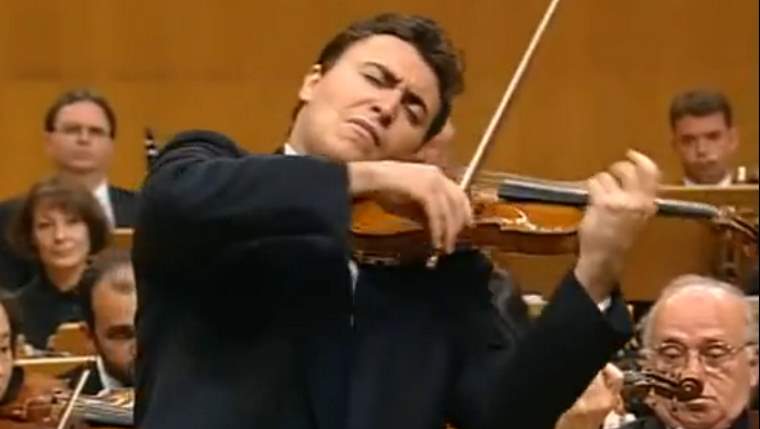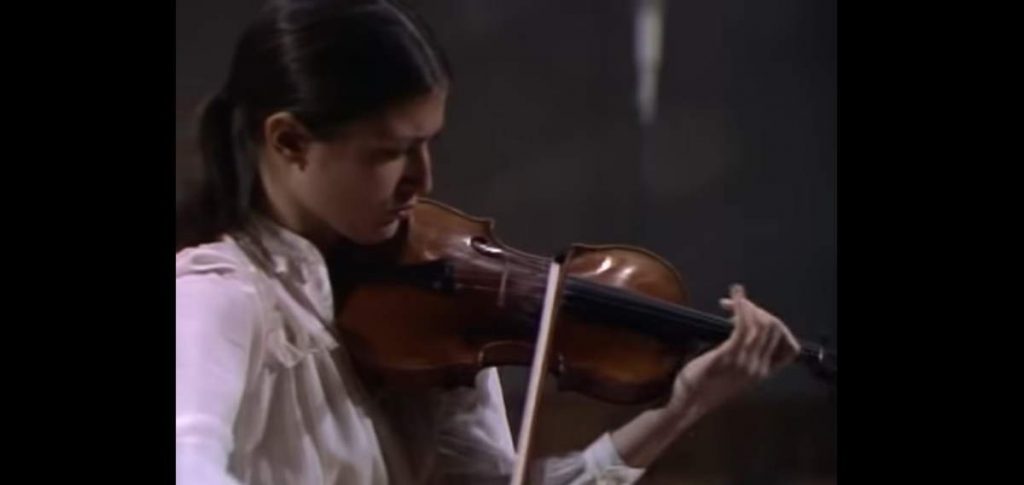Accompanied by the Orchestre Philharmonique de Radio France, American classical violinist Hilary Hahn performs Jean Sibelius’ Violin Concerto in D minor, Op. 47. Conductor: Mikko Franck. This performance was recorded live on May 2, 2019, at the Radio France Auditorium in Paris.
Sibelius’ Violin Concerto
Four years before the death of the Hungarian violinist, conductor, composer, and teacher Joseph Joachim (1831-1907), who inspired a great number of 19th-century musical compositions, Jean Sibelius began writing his own Violin Concerto, composed between his second and third symphonies.
Sibelius originally dedicated the concerto to the noted violinist Willy Burmester, who promised to play the concerto in Berlin. For financial reasons, however, Sibelius decided to premiere it in Helsinki, and since Burmester was unavailable to travel to Finland, Sibelius engaged Victor Nováček (1873-1914), a Hungarian violin pedagogue of Czech origin who was then teaching at the Helsinki Institute of Music (now the Sibelius Academy).
However, contrary to Brahms for example, the concerto was not written with Joachim in mind, or even performed by the famous violinist. The concerto was first heard in 1903, then premiered in its final version on 19 October 1905 in Berlin, performed by Karl Halir and conducted by Richard Strauss.
The work bears witness to Sibelius’s desire to add a sense of vigor to his musical expression, a density far from the sentimentality, for example, of Glazounov (whose Violin Concerto also dates from 1903). Sibelius, himself a talented violinist, tackled one of the most traditional forms, respecting the tripartite progression (a rhapsodic first movement, a sublime cantilena, a joyful rondo), imbued with a unique and foreign inspiration.
Eight years later, Nielsen also attempted to renew the concerto form (divided into two parts, each with two movements), but his attempt did not have the same impact. At the heart of Sibelius’s creation, we find a musical universe that is both changing and maturing. In 1904, Sibelius moved to Järvenpää, his final home thirty kilometers north of Helsinki, as if in search of a new environment, one of solitude and exigency.
Sibelius never sought modernity at all costs. He was of his time, and not one imposed by the day of his birth. When asked, in 1914 which composer of his time was the greatest, he answered without hesitation: “Schoenberg. But I also enjoy my own music”.
Little concerned by the musical fashions and current trends, Sibelius was nonetheless a victim of those, though well-intentioned, who saw him as the composer of rising Finnish nationalism.
Movements
- Allegro moderato. The 1st movement opens with a cushion of pianissimo strings pulsating gently. The soloist then enters with a characteristic IV-V-I phrase, in D minor G-A-D. The violin announces the theme and is briefly echoed by the clarinet, then continues into developmental material. More low woodwind and timpani accompany the soloist in several runs. Almost cadenza-like arpeggios, double stops, and more runs are accompanied by more woodwind restatements of the theme. The soloist then plays a short quasi-cadenza featuring veloce ascending scales and quick “bottom-middle-top-middle” figurations with rapid string crossings and spiccato. After a rapid ascending figure from the solo violin in broken octaves, the strings then enter brazenly for the first time, announcing a second theme. This second theme is then carried on by the bassoons, and then the clarinets, before the re-entrance of the soloist. The violin plays a gentle elaboration of the main theme, and then a quick arpeggio which ascends into the same second theme played in warm and passionate sixths, and then affettuoso octaves. The soloist softly soars in a slow D♭ arpeggio which leads into the second theme with grace notes an octave lower; following is a trill on one string with the second theme played again, on another string. Another orchestral tutti leads to a violin cadenza, which then opens into the recapitulation, the second theme is played by the violin a semitone higher than before. A long trill from the soloist suddenly transitions into the quick and fiery coda, featuring descending chromatic octaves, rapid and wide shifts to harmonics, and ricochet bowing. An upward cascade of double stops and a final D conclude the first movement.
- Adagio di molto. The final movement opens with four bars of rhythmic percussion, with the lower strings playing ‘eighth note – sixteenth note – sixteenth note’ figures. The violin boldly enters with the first theme on the G string. This first section offers a complete and brilliant display of violin gymnastics with up-bow staccato double-stops and a run with rapid string-crossing, then octaves, that leads into the first tutti.
- The second theme is taken up by the orchestra and is almost a waltz; the violin takes up the same theme in variations, with arpeggios and double-stops. Another short section concluding with a run of octaves makes a bridge into a recapitulation of the first theme. Clarinet and low brass introduce the final section. A passage of harmonics in the violin precedes a sardonic passage of chords and slurred double stops. A passage of broken octaves leads to an incredibly heroic few lines of double-stops and soaring octaves. A brief orchestral tutti comes before the violin leads things to the finish with a D major scale-up, returning down in flatted supertonic (then repeated). A flourish of ascending slur-separate sixteenth notes, punctuated by a resolute D from the violin and orchestra concludes the concerto.
Sources
- Jean Sibelius on Wikipedia
- Violin Concerto (Sibelius) on Wikipedia



![Sibelius: Violin Concerto [Hilary Hahn]](https://cdn-0.andantemoderato.com/wp-content/uploads/2022/09/Sibelius-Violin-Concerto-Hilary-Hahn-2010-1024x565.jpg)